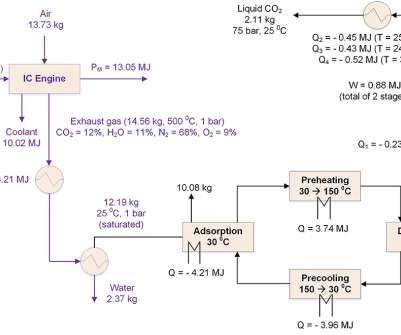EPFL team develops on-board system to capture CO2 from trucks; reducing emissions by 90%
Green Car Congress
DECEMBER 26, 2019
Researchers at EPFL have patented a new concept that could cut trucks’ CO 2 emissions by almost 90%. The patented concept is the subject of an open-access paper published in Frontiers in Energy Research. First, the vehicle’s flue gases in the exhaust pipe are cooled down and the water is separated from the gases.








































Let's personalize your content